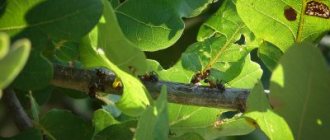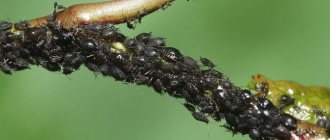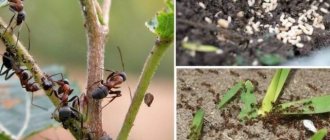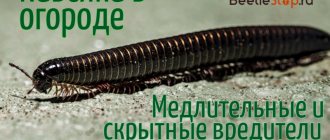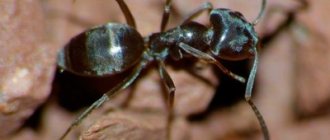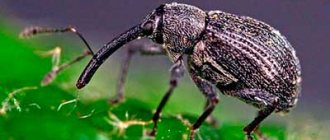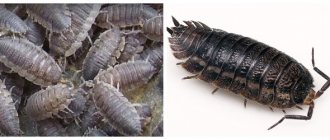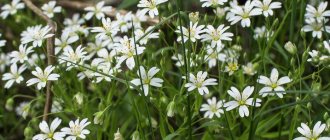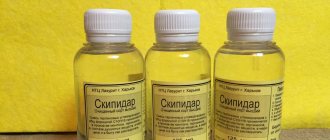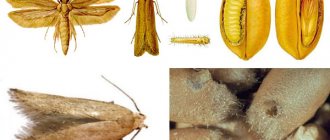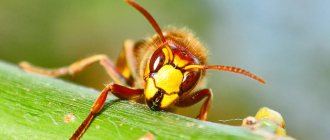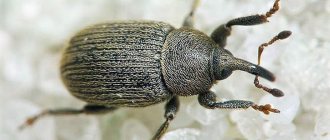Growing a lemon tree in an open area is possible only in the southern regions. Citrus lovers in the middle zone usually cultivate them at home or in greenhouses. After 5 years of painstaking work, the tree pleases with fragrant yellow fruits. Lemon care includes not only maintaining temperature conditions, fertilizing and watering, but also pest control. If the plant has become weaker and brown spots appear on the leaves and branches, this is a scale insect. A small parasite sucks the life force out of the tree. How to get rid of scale insects on lemon? It can be removed using chemicals or safer folk remedies.
Sciarids (midges)
Sciarides multiply very quickly when the soil is waterlogged.
And although in small numbers they do not cause much harm to the plant, the large number of midges negatively affects the tree, since adult individuals can carry diseases, and voracious larvae spoil the root system. Lemon grows poorly, does not bear fruit and can become sick. Often the cause of the appearance of sciarids is soil contaminated with larvae. Midges can enter a living space through open windows, ventilation, or through fruits or vegetables. In order not to create a favorable environment for insects to reproduce, the soil should not be allowed to become excessively moist and, especially, not to become sour. Before planting (transplanting) the plant into new soil, it is advisable to spill the substrate with hot water or calcine it. The spread of pests is prevented by sprinkling the soil surface with sand, small pebbles or expanded clay. It is necessary to ensure that the soil mixture is clean, without plant debris: fallen leaves, flowers, etc.
If it so happens that there are too many sciarids, you can use the insecticides Grom-2, Karbofos, Muhoed, Actellik, Bazudin and other drugs. They water the soil (strictly according to the instructions) 2-3 times every 7-8 days. Traditional methods also help get rid of midges: spraying and watering with laundry soap (20 g per 1 liter of water), a weak solution of potassium permanganate, treating the above-ground part of the lemon with infused tobacco for 2 days (20 g per 1 liter of water). Ash and dill seeds scattered over the surface of the soil help in the fight against insects. Some gardeners use matches, which are stuck into damp soil with their heads down for 3-4 days, then they are removed and new ones are used. The procedure is carried out 3-4 times until the midges disappear.
In order for a lemon to delight with its beauty and bear fruit, it is necessary to properly care for it, observe the temperature and humidity conditions, constantly inspect the tree and other indoor plants in order to notice pests in time and take appropriate measures to get rid of them.
Expert comments
Ivan Romasov, therapist at the Semeynaya clinic network
What to do if hiccups do not go away and nothing helps?
In most cases, prolonged hiccups are not caused by a physiological reflex, but as a consequence of various diseases. Self-treatment in this case is inappropriate.
First, you should contact a therapist who will conduct an initial examination and help identify the cause of the hiccups. Most often, the problem goes away on its own with treatment of the underlying disease. But in some cases, to correct hiccups, specialists additionally prescribe serious drugs from the group of antipsychotics.
Why do hiccups appear after drinking alcohol?
The mechanism by which hiccups appear when drinking alcohol is complex. Firstly, ethyl alcohol and its derivatives provoke stimulation of the vagus nerve. Secondly, carbonated alcoholic drinks contain carbon dioxide, which forms an air bubble that compresses the vagus nerve. Thirdly, ethanol breakdown products affect the organs of the gastrointestinal tract and contribute to liver enlargement. As a result, it begins to put pressure on the diaphragm.
As a rule, such hiccups are complicated by a pronounced gag reflex, which is why there is a risk of choking on vomit. Especially if you fall asleep or have a foggy mind. In addition, with the systematic consumption of alcoholic beverages, acute polyneuritis, an inflammatory disease of peripheral nerve endings, can occur.
With moderate alcohol consumption, hiccups go away on their own. To quickly remove toxic ethanol compounds, you can use sorbents: polysorb, enterosgel, polyphepan, activated carbon.
In case of severe alcohol poisoning and long-lasting hiccups, you should consult a doctor. In this case, serious detoxification therapy will be required. Self-use of medications can only cause harm.
Anastasia Pirozhkova, pediatrician of the Semeynaya clinic network
Should I worry if my baby often hiccups in the stomach during pregnancy?
In the second or third trimester, many mothers begin to feel short rhythmic twitches - this is how the baby hiccups. This is absolutely normal. There is a theory that hiccups play a role in the maturation of the lungs and are an important and necessary reflex. There is no need to fight her.
If this makes mom feel uncomfortable, she can try changing her body position, stroking her belly, or eating something. Perhaps one of the suggested methods will work. If a child hiccups for a very long time and often, especially in the third trimester, it is better to go for an examination with an obstetrician-gynecologist.
How to safely get rid of hiccups in newborns?
Newborns hiccup frequently. One study found that hiccups may make a beneficial contribution to the development of the cerebral cortex. At the same time, it almost never bothers the newborns themselves - they continue to sleep soundly. We still don't know the exact causes of hiccups. In newborns, the trigger may be air absorbed during feeding or bloating. You need to help the baby burp out excess air, hold it in a column for 20–30 minutes after feeding. You can use exercises that make it easier to remove accumulated gases.
For older children, encourage them to drink a cold drink, eat ice cream, or change their position. The main thing is to choose safe methods. That is, you should not scare children, pull their tongues or use other sophisticated methods of dealing with hiccups. If hiccups persist for more than 48 hours or often bother your child for a long time, consult a doctor to identify possible causes.
Lemon pests: spider mites and their photos
Spider mites on lemons attack young leaves and immature shoots. It settles on the underside of the leaf blade along the veins and feeds on the juice of the leaves, after which they turn yellow and dry out. It is quite difficult to detect a tick with the naked eye, since this pest reaches no more than 1-2 mm. Signs of its appearance are small, light dots - places where the leaf plate is punctured. In some cases, the leaves curl up, and cobwebs can be seen on their reverse side. New mites hatch in the web, and the affected leaf falls off.
Spider mites can be red, yellow, orange, white, or transparent. The most common pest of indoor lemons is the red spider mite.
There may be several reasons for the appearance of this parasite. It can get home from the street through open windows, or into the soil during transplantation. Often the cause of its appearance is dry warm air in the room.
If an insect is detected, the tree is sprayed with sulfur. Pesticides are also used to destroy it.
For preventative purposes, the lemon is washed under running water, paying more attention to the underside of the leaves. Spraying the affected plant with water and laundry soap has a good effect.
Spider mites do not tolerate ultraviolet rays, so when fighting them, citrus is placed under a special ultraviolet lamp for 1.5-2 minutes. This session is not only harmless to the plant, but increases its resistance to diseases and pests
Treating the leaves with a 96% alcohol solution will help get rid of the parasite. Their surface is wiped with a cotton swab dipped in alcohol. The alcohol should not be diluted, as it will take longer to evaporate, which will cause burns to the leaves. After a week, the treatment is repeated. Before processing, it is necessary to remove all affected parts of the lemon.
To destroy spider mites, you can use 35% sulfaride paste. The tree is treated with this solution 3-5 times with an interval of 7-10 days. However, such treatment is not recommended at the flowering and fruit set stage.
Nematodes
All the lemon pests described above damage the aboveground part of indoor lemons - they are visible to the naked eye and easy to diagnose. It is more difficult with pests that live in the soil, in a pot, or at the roots of plants. Among the “hidden” pests of lemons and citrus fruits in general are nematodes and microscopic worms.
Nematodes feed on the juice from lemon roots. Over time, the root system dies off - it dies from necrosis, which also affects the above-ground part: the leaves wither, curl, and stop growing and developing. If the infection is severe, the indoor lemon dies.
Nematodes are quarantine pests; where there are nematodes, total disinfection is carried out. To prevent infection with nematodes, it is recommended to disinfect pots with soil by keeping them in a bucket of boiling water for an hour.
Scale insect - description of the insect
The scale or shield aphid is the most common pest on citrus plants. The sucking insect, depending on the species, has sizes from 1 to 5 mm. To protect them from external influences, their body is covered with a wax shield. In insects belonging to the suborder Coccidae, male and female individuals differ significantly. Males are smaller than females, they have one pair of wings and normally developed limbs. Their scutes are flat and elongated, their mouthparts are poorly developed.
Females are noticeably larger, but are completely devoid of limbs (in some cases, even vision). The lemon scale sticks to the plant and leads a sedentary lifestyle. The purpose of the female is procreation; to protect her and her offspring, the scale insect is endowed with a powerful rounded shell. The male finds a mating partner by moving around the plant. After the female is fertilized, they die. Pests reproduce by eggs; viviparous species are less common. The insects are very prolific and quickly colonize the plant. Active larvae emerge from the eggs. They move around the lemon tree until they find a good place to latch on. Females remain motionless forever. Females live for several months, during which time they lay up to 100 eggs. After several molts, a shell of skins and a wax segment appears on the back of the insects.
This is interesting: Soil for lemon at home - how to choose
What examination is needed?
If you have excessive sweating, you need a dermatologist, and if you have hyperhidrosis of the feet, you need a podiatrist. To find out the type and causes of hyperhidrosis, the doctor will definitely conduct an examination before treatment. If necessary, he will refer you to a neurologist or other specialized specialists.
Answering the following questions will help you determine the type of hyperhidrosis:
- Does sweating happen for no apparent reason?
- Is it the same on both sides of the body?
- How does it affect quality of life?
- How often do episodes of excessive sweating occur?
- When did the first symptoms appear?
- Do relatives have this problem?
- Do you sweat during night sleep?
Special functional tests have been developed to assess the degree of hyperhidrosis. They are used to determine the amount of sweat secreted, the intensity of sweating, and find the places on the body where it is most pronounced. Most tests have no practical diagnostic value. They are used for scientific research or to evaluate the effectiveness of treatment.
These methods include:
- calculation of body weight loss over a certain time;
- absorption of sweat from the skin or in special chambers by various absorbers;
- measurement of skin surface resistance, which changes depending on the intensity of sweating;
- provocative tests with the introduction of substances that stimulate or inhibit sweating;
- tests using substances that can change color when combined with sweat (iodine-starch test).
In case of secondary hyperhidrosis, the doctor will ask you in detail about your health status. He will prescribe blood and urine tests, hormonal tests, and measure blood pressure to find the true cause. If you have a chronic illness or are taking any medications, tell your doctor.
Pest control methods
It is quite difficult to destroy scale insects on indoor lemons due to their durable shell. It serves as a shield for the pest from chemicals and other harmful substances. But with persistence and using various means, you can achieve complete destruction of insects.
Mechanical method
The shell of an adult does not allow insecticides to penetrate the insect's body. To remove them from lemon, you should use a mechanical method. To do this you will need:
- alcohol or alcohol-containing product;
- cotton swab or toothbrush.
A cotton swab is moistened with alcohol, and then all places where a cluster of scale insects is noticed are wiped. If insects are difficult to remove, you can use a toothbrush. You should carefully examine the leaves on both sides, ovaries and stems. Scale insects settle in large numbers on lemons, so do the work carefully.
Chemicals
A pest that multiplies quickly like scale insects cannot be dealt with without chemicals.
Among the effective means:
- "Actellik" is a broad-spectrum drug that destroys the body of insect pests. It is used to kill sucking insects. Home plant lovers who have used the drug on their lemons confirm its effectiveness. The disadvantage of Actellik is its sharp, specific smell, which causes a headache in a closed room. If possible, it is better to carry out the treatment outdoors. If the insecticide was applied in an apartment, the room should be well ventilated.
- "Aktara" - the product is considered one of the best drugs against pests. The fight against scale insects on lemon will take only a day, after this period the insects die en masse. The effect of "Aktara" persists when sprayed for up to 4 weeks. The drug can be poured under the root of a low tree, it will be absorbed into the sap of the plant and poison the pests. The substance is classified as moderately hazardous. Therefore, its use for indoor plants does not cause negative consequences.
- “Fitoverm” is a biological type insectoacaricide that has an intestinal contact effect on pests. The drug does not pollute the soil and decomposes quickly. Lemon fruits can be eaten 2-3 days after processing the tree.
Folk remedies
Chemicals are often used with caution, especially for indoor plants. The use of a composition of soap and kerosene received a lot of positive feedback from flower growers and gardeners. A soap film covers the plant, preventing air access to the insect, and kerosene, flowing under the shell, poisons the scale insect. To prepare the composition you will need the following ingredients:
- 1 liter of water;
- 50 g laundry soap;
- 5 drops of kerosene.
All components are combined in one container and mixed thoroughly until the soap dissolves. Use the prepared mixture to treat the entire lemon against scale insects. The solution is left on the plant for 2-3 hours, then washed off with clean water. A pot of indoor lemon can be taken into the bathroom and washed well in the shower.
For processing, tinctures of garlic, onion and pepper are used. They are prepared according to a similar recipe: 50 g of a vegetable (onion with peel, pepper or garlic) is crushed and filled with 0.5 liters of water. Infuses for 14-15 hours. The composition is wiped on leaves and branches. Traditional recipes are effective in combination with mechanical removal of insects.
Features of plant processing
Because of the shield, pests are very difficult to exterminate.
Chemicals cannot penetrate inside. Therefore, they are very often an auxiliary method of protection. Physical treatment with a metal scraper or brush cleans an adult tree well. It is very convenient to walk over the bark of them in order to rip off both their shells and the pests themselves. There are no age restrictions; this mechanical method works equally on adults, larvae and eggs. Seedlings and adult apple trees can be treated in this way.
Here are the types of drugs you should pay attention to:
- A phosbecide that acts quickly and effectively, but is very toxic.
- Aktara, an effective remedy with an unpleasant odor that also removes bees.
- Bitoxibacillin, a biological agent of targeted action, safe for humans and other insects.
- 30 plus, a safe remedy that suppresses almost any pathogenic microflora, but is effective only in the spring.
If the lesion is very extensive, it will be easier to saw off the infected parts
It is very important to burn them immediately
Video “Diseases and pests of lemon”
From this video you will learn about what diseases and pests are dangerous for lemon and how to treat it.
Chemical and biological preparations against spider mites.
Karate
– insectoacaricide (active ingredient lambda-cyhalothrin). It is a pyrethroid with a wide spectrum of action (enteric-contact and fumigate action). It is used in the fight against aphids, thrips and mites, as well as against caterpillars, beetles, weevils, flies, cockroaches, and mosquitoes. To prepare a solution: 0.2 ml karate per 1 liter of water. If necessary, the treatment is repeated after two weeks. The drug is effective in all weather conditions (heat / cold / humid climate) and is not washed off by rain less than 1 hour after treatment. Hazard class 2. The drug is slightly toxic to birds, toxic to fish and bees.
Fitoverm.
It is created on the basis of waste products of soil microorganisms, therefore it is the safest. It has contact, intestinal and antifeedant effects. Fitoverm has a wide spectrum of action against all types of herbivorous mites, as well as all types of aphids and other pests. Treatment of plants is carried out during the growing season in dry, clear and windless weather. Treatment is carried out with any type of sprayer that provides fine spraying and uniform wetting of the leaf blade. Already 6-8 hours after treatment, gnawing pests stop feeding (for sucking pests this time is extended to 12-16 hours). It must be taken into account that the death of pests occurs 2-3 days after treatment, and the maximum effect is achieved on 5-7 days. The effect of the drug on the leaf surface lasts up to 7 days. The working solution is not stored. When fighting spider mites, 1 ampoule is diluted in 1 liter of water. Carry out 4 treatments with an interval of 7-10 days. The drug is moderately dangerous for humans and animals (hazard class III). Fitoverm has a peculiarity: low efficiency at temperatures below 18 0C. One of the advantages is that it is a drug of biological origin. 2-3 treatments with an interval of 5 days and there should be order. The downside is that it smells just as disgusting as Actellic, and it practically doesn’t work against spider mites on roses.
Growing a beautiful plant and never encountering its enemies is an unrealistic situation. Midges and harmful microorganisms crawl into the most sealed places. The only place is a vacuum, but it is contraindicated for all living organisms. So, let's talk about harmful midges and nasty spores of all kinds of fungi, necrosis, etc.
How to get rid of aphids on lemon
To prevent the infection from developing into a severe infestation, measures should be taken in time. Controlling aphids on plants in the early stages will prevent severe destruction of citrus. If you manage to detect a parasite, you need to use effective means.
Traditional methods
Garlic infusion has a strong aroma that insects do not like. The head is crushed in a blender or through a meat grinder. The resulting mass is poured with a glass of hot water and left in a dark place for 48 hours. The solution is filtered and poured into a spray bottle. The plants need to be treated every other day for a week, then after 7 days the event is repeated.
An aqueous infusion of tobacco dust is a strong insectoacaricide that fights all sucking parasites. Laundry soap will help improve adhesion to foliage. Lemon should be sprinkled generously. To protect the soil from alkalization, you need to cover the pot with film. The procedures are repeated every other day for 5 days, then a week break.
Crushed wood ash is an effective folk remedy for aphids. Fine powder is sprinkled on the foliage of the plant. If you add raw materials to soapy water, you can easily remove parasites. Spray the lemon or rinse the affected plates.
An infusion of dry mustard quickly copes with a medium infestation. The working solution is prepared from 70 g of spice and 1 liter of boiling water. The liquid is stirred until smooth and tightly closed for 3 days. The spray concentrate is diluted with water in proportions of 1 to 3.
The ladybug is a natural enemy of aphids, with which it is easy to reduce the number of aphids. Several tiny predators do not harm the cultivated plants at home; they quickly devour the colony. After eradication, the insects are released into the wild.
Insecticides
Chemicals affect the nervous system. Affected specimens stop sucking juice from the leaves and die from starvation or organ dysfunction. Iskra Zolotaya fights against aphids, mites and thrips. Add 1 ml of poison to 5 liters of water and spray the greens. For 25 days, the insecticide protects lemons and new shoots.
Aktara is a systemic drug that penetrates the foliage through the roots. After watering, the chemical is distributed throughout the plant tissues and reaches the top on the 3rd day. The product is not afraid of bright sun and high temperatures, protects lemons of any size for a month, and when sprayed – for more than 50 days.
The commander fights not only with adults, but also with eggs and larvae. A strong insecticide after one treatment protects the tree from parasites for a period of 2 to 4 weeks. The procedures are carried out outdoors wearing protective gloves and a mask.
Methods of infection
Scale insects are small (up to half a centimeter) insects that prefer to parasitize plants. They got their name from the dense brown shield that covers their body. There are many types of these parasites, but they are found mainly on the leaves of the tree and on the trunk.
In addition to these troubles, you may encounter another one: in the course of their life, insects secrete a sweetish liquid that covers the leaves of the lemon. It also contributes to the appearance of sooty fungus.
The methods of infection by this parasite are as follows:
- You can bring the bug from the store when you buy flowers there.
- The larvae can enter the plant through an open window.
In addition, weakened lemons are the first to suffer, so make sure that your trees grow healthy and strong - then they will not be afraid of the scale insect.
The main ways for scale insects to appear on indoor lemons are:
- infections brought with a plant from a store or neighboring plants;
- spread of scale insects by wind if the citrus is located on an open veranda in the summer.
A lemon affected by scale insects is in serious danger. Food for scale insects is proteins contained in the sap of the tree. In the affected lemon, internal chemical processes are disrupted, which negatively affects the condition and appearance of the crop. In the absence of timely treatment, the lemon loses its leaves, then the branches dry out. As a result, the tree dies.
The sugars contained in lemon juice are converted into honeydew in the scale insect's digestive tract. The pest does not stick to its own secretions, since during the course of evolution it acquired special glands that shoot secretions. As a result, drops of honeydew can be seen on a plant, a flower pot, even on window glass and a windowsill, but the scale insect itself remains unharmed.
Toxins are injected into the plant tissues of the scale insect, which disrupts photosynthesis and stops the development of the lemon.
The sweet secret attracts the ants, and in the end you have to fight them too. Honeydew is also a good substrate for the propagation of saprotrophic fungal infections.
Signs of pest damage
In addition, the leaves are covered with a sticky substance (honeydew), which is easily felt when touched. The leaves and the fruits themselves are covered with small brown spots.
It is by these signs that scale insects on lemon can be detected.
It is difficult to identify scale insect larvae on lemons; they are microscopic and move quickly. But it’s not difficult to spot adult insects.
Signs of lemon scale damage:
- covering the trunk and leaf blades with brown waxy scales;
- red and brown dots on the surface of the leaves - places where the scale insect sucked the juices;
- sticky transparent drops on the leaves.
Prevention
Preventive measures are a set of measures aimed at preventing invasion. Bouquets, especially chrysanthemums, should not be kept in the same room as homemade lemons. Flowers cut at the dacha are home to pests. One female mite or aphid will become the founder of a huge colony. As a preventive measure, street specimens are sprayed with dichlorvos.
New potted plants are left in quarantine for a month after purchase. If no signs of pests appear within 30 days, then they can be transferred to the collection. When there is no time to wait, then preventive irrigation is carried out with Aktara.
Citrus fruits love intense lighting, regular fertilizing and proper irrigation. If the basics of agricultural technology are violated, the plant weakens and becomes vulnerable to external attacks. Compliance with care conditions will minimize the possibility of invasion.
Spider mites and aphids on lemons are dangerous insects that are difficult to detect in the early stages. Timely use of chemicals or folk recipes will help destroy the colony. To prevent pests from spreading, you need to use the products correctly.
Preventive measures
To prevent lemon damage from pests, you should follow simple preventive measures:
- Trim damaged branches and weak shoots in a timely manner. attracting pests;
- send recently purchased plants to quarantine;
- keep the soil in the pot clean;
- regularly ventilate the room, ensure sufficient humidity levels;
- Every week, wipe the leaves of the plant on both sides with a damp cloth, this will get rid of dust and pests.
The fight against scale insects must be comprehensive; this is the only way to completely get rid of insects on your homemade lemon. Compliance with preventive rules will prevent the plant from becoming infected with dangerous pests.
What to do and how to fight the parasite
To prevent the currants from dying, you need to start fighting insects as early as possible. To get rid of pests, chemicals and folk remedies are used. The first method is used in the presence of a large number of insects at any stage of vegetation development, the second is suitable in the early stages of infection, when there are not very many parasites, at the stage of bush vegetation before the berries begin to ripen.
1- larvae and pupae of scale insects; 2- scale insect on currants
Folk methods of struggle
Traditional recipes involve the use of rather aggressive ingredients (garlic, pepper, soap), which can lead to burns on the foliage. In this regard, it is necessary to irrigate with clean water after each treatment. To eliminate scale insects and false scale insects, you can use the following folk recipes:
- Soap-oil solution - add 15 g of liquid soap and 1 tsp to 1 liter of warm water. sunflower oil. The resulting liquid is used to lubricate plant leaves and shoots using a cotton swab. After 8 hours, thoroughly irrigate with clean water to wash off the emulsion. Repeat the manipulations in this order 3 times with an interval of 10 days between them.
- Garlic infusion - add 10 cloves of garlic, crushed to a pulp, to 200 ml of water at room temperature. Leave the infusion for 2 days, then filter. Dilute the concentrate in 1 liter of water, spray on the leaves and shoots from a spray bottle. After 10 hours, be sure to wash off the product with clean water.
- Pepper infusion - add 50 g of hot pepper to 500 ml of water, boil for 15 minutes, then leave for 24 hours in a dark room. Add 10 ml of concentrate and 10 ml of liquid soap to 1 liter of clean water. The resulting emulsion is sprayed onto the bushes. After 10 hours, wash off the solution with clean water.
- Dusting a leaf with tobacco dust or wood ash - applied to plants and soil. It is not necessary to wash off the products from the foliage.
Chemicals
List of chemicals that will help eliminate scale insects and false scale insects from currants:
- “Actellik” - take 1 ampoule of the substance for 1 liter of water. To process 10 m², 2 liters of working fluid are required. If after 3 days the number of pests has not decreased, spray again.
- “Aktara” - the best results are obtained by simultaneous watering at the roots and spraying on the leaves. Add 8 g of granular preparation to 10 liters of warm (+30°C) water. This amount is enough to process 10 m² of area. 300 ml is added to the root of each plant, the rest is sprayed with a spray bottle.
- “Phosbecid” - add 20 ml of liquid to 10 liters of water. This amount is enough to process 10 m² of currant plantings.
- “Admiral” - 1 ml of the drug is used for 4 liters of water. This is enough to spray 100 m² of plantings.
- “Spark” - add 2 ml of product to 1 liter of water; in case of serious damage, the dosage is increased to 6 ml. Consumption per 10 m² is in the range of 0.4–0.8 l of working fluid.
Important! When using chemicals to eliminate pests, be sure to read the manufacturer's instructions and do not exceed the specified dosage. In addition, it is very important to observe your own safety measures - always use a respirator, safety glasses and wear clothing that covers the skin as much as possible. Otherwise, the parasites will develop resistance to them, and people who eat currants will expose themselves to the danger of serious poisoning
Otherwise, parasites will develop resistance to them, and people who eat currants will expose themselves to the danger of serious poisoning.
Why lemon leaves are sticky: establishing the reasons
If sticky spots appear on the lemon leaves, you need to carefully examine the plant. Often, incorrect agricultural practices are to blame for such a situation, but the cause may also be infestation by insect pests.
A sticky coating on lemon leaves is always a consequence of one of three negative factors:
- Long-term excessive watering;
- Defeat by scale insects;
- Aphid infestation.
In order for the green mass of lemon to withstand the appearance of sticky spots with minimal losses, it is necessary to choose effective treatment methods.
Excessive watering
Leaves covered with a sticky coating are a completely natural reaction of a tree to excess moisture in the soil. Under natural conditions, such a situation is not uncommon, because this representative of citrus fruits secretes a specific sugar liquid to attract ants.
They, in turn, protect the crop from pests by collecting them from all parts of the plant.
Take a close look at the soil in the pot - are you flooding it?
If the soil is excessively waterlogged and the leaves are sticky and shiny, then the reason lies in improper care.
What to do in this situation:
- Normalize watering, moistening the substrate as needed, when the top layer (2-3 cm) dries.
- Check the quality of the drainage system (the presence of holes for removing excess moisture and a drainage layer) and if it is missing, transplant the plant into another pot with everything necessary.
- Use a suitable substrate for citrus fruits with sufficient looseness and water permeability.
If the lemon is heavily flooded, in addition to normalizing watering, it is necessary to completely replace the substrate with fresh one to avoid rotting of the root system.
Defeat by scale insects
The appearance of scale insects on a lemon is a much more serious problem than excessive watering, because in the absence of treatment and treatments the plant dies.
The pest can be present on a recently purchased flower, and then “move” to an indoor lemon, or get onto the tree in other ways.
The presence of scale insects can be determined by the following signs:
- On the green mass you can see dry brown spots, brown pimples, as well as a sticky lemon on the trunk (a waste product of the pest).
- Colonies of female scale insects (small black, transparent or other colored insects) and males (larger in size, approximately 2-3 mm) are visible on the plant.
- The leaves are covered with sooty fungus.
- The lemon gradually dries out due to exhaustion.
How to deal with scale insects:
- Carry out interval treatment (3-5 times) with insecticide preparations “Aktara”, “Confidor”, “Fitoverm” every 4 days.
- Spray all parts of the plant, including hard-to-reach places (internodes, root zone, lower part of the plates and leaf axils).
- Chemical control methods can be alternated with effective folk remedies. It is advisable to use tobacco infusion (50 g of tobacco per 1 liter of water, leave for 2 days, spray 4 times every day). Or a soap-alcohol composition (dilute 10 ml of 70% alcohol and 15 ml of soap in 1 liter of water), preventing them from getting into the ground.
Additionally, you can spill the lemon with Aktara solution according to the instructions.
Sticky coating due to aphid infestation
Aphids are small light green insects that feed on plant juices and, if untreated, lead to complete death. The pest is easy to see with the naked eye, because it settles on all vegetative parts of the lemon tree and provokes the appearance of a sticky coating, curling, and drying out of the plates and entire shoots.
What to do if you are infested with aphids:
- Wash the affected parts of the lemon with a solution of laundry soap - pour 300 g with two liters of warm water and let it brew, then add 8 liters of cold water. Treat every 7 days.
- Use garlic water - chop 1 head of garlic, add 200 ml of water and leave for 2 days, then use for spraying or wiping infected parts. Process the lemon at intervals of 5 days.
- Use a herbal infusion of nettle or wormwood (pour 2 tablespoons of dry collection with a glass of boiling water and leave for 12 hours, strain before use).
- Spray with propolis solution (5 tablespoons of pharmaceutical product diluted with 20 tablespoons of boiled water).
If folk remedies do not help get rid of aphids, it is advisable to use chemical insecticides (“Aktofit”, “Aktellik”, “Fitoverm”). The spray solution must be prepared according to the instructions on the package.
How to fight?
What to do if you notice traces of mealybug activity on your lemon? How to rid a tree of uninvited guests? All control methods can be divided into two groups: traditional methods and treatment with chemical insecticides. Let's look at all these methods.
We suggest you read: How to get rid of lice bites
